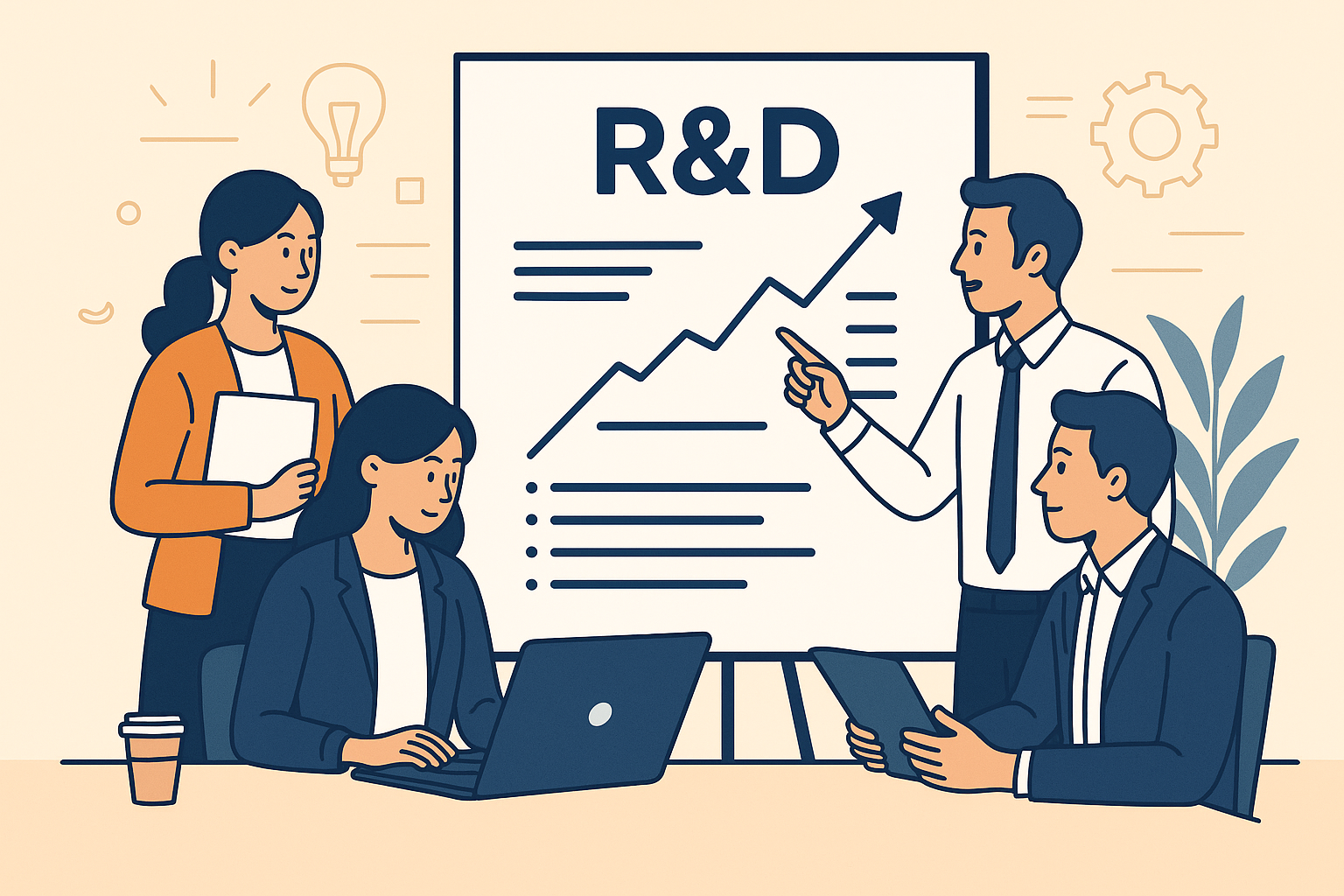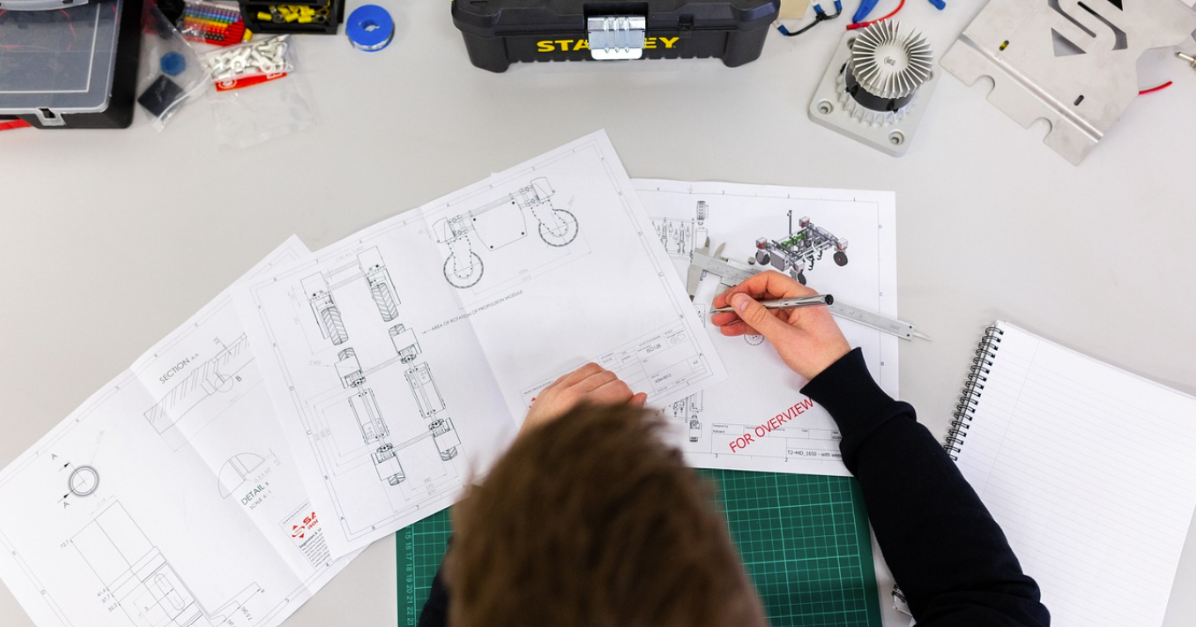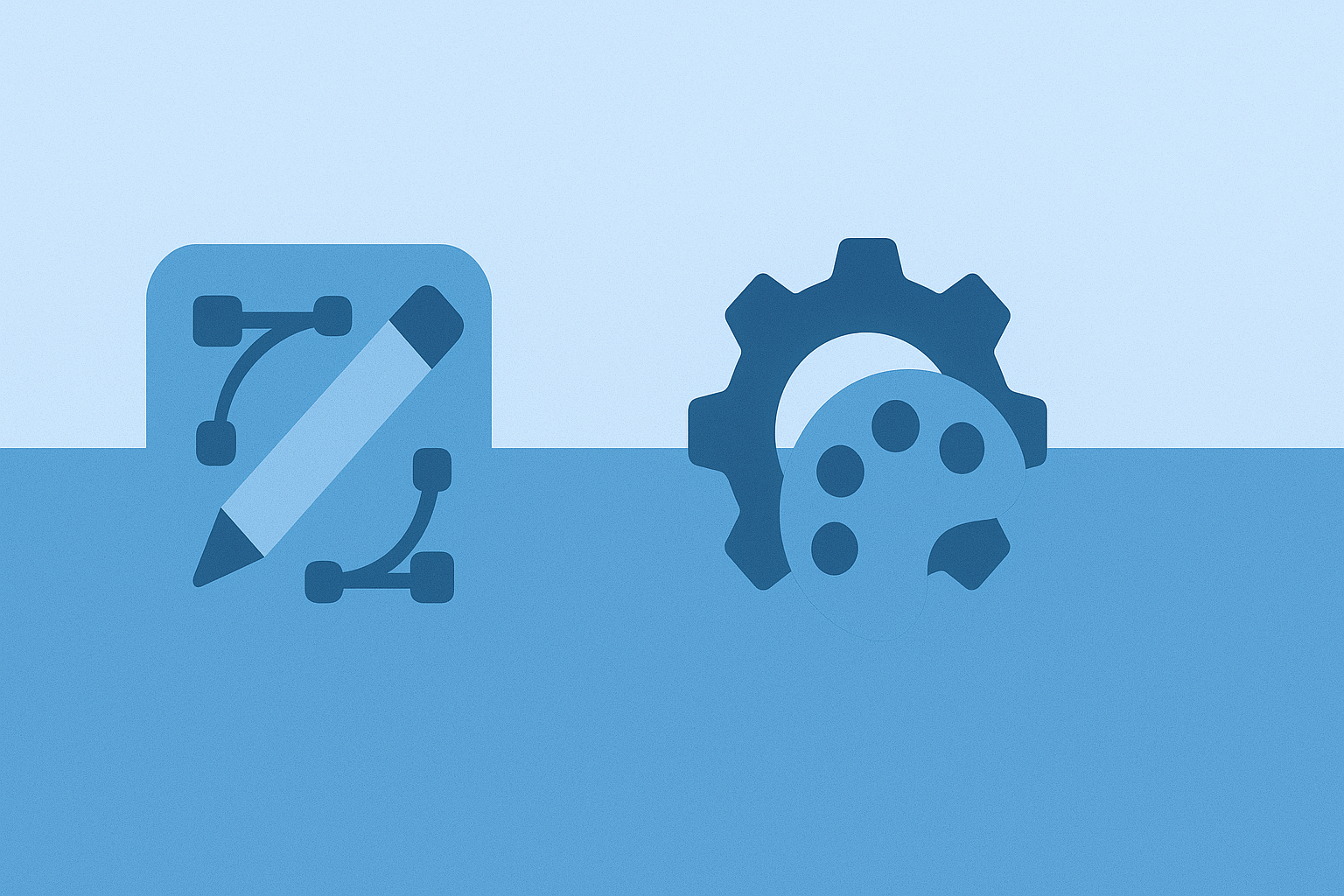R&D as the Heart of Innovative Business
Research and Development (R&D) is a company function that focuses on creating new or improving existing products, technologies, and solutions. The research and development team literally serves as the driving force that transforms ideas into competitive advantages and ensures sustainable business growth.
There are different types of R&D activities: basic research, applied research, and experimental development. Basic research often doesn’t have immediate commercial returns but creates the foundation for breakthroughs (for example, DeepMind spent years working on artificial intelligence to understand fundamental algorithms, which later became the basis for practical solutions). Applied research focuses on specific tasks: for instance, this could be solving a particular problem in an existing application’s interface that causes users to abandon it. Experimental development is closest to business, as this is where ideas transform into products: for example, when Tesla tests new batteries and immediately integrates them into car prototypes. Each of these directions requires different types of R&D organization structures and competent resource allocation.
Without a well-structured research and development team, even the most promising startups quickly lose competitiveness. A striking example is Jawbone – a pioneer in wearable electronics with revolutionary ideas in fitness trackers. Despite initial success and investments of over $900 million, the company went bankrupt in 2017 due to the lack of a systematic approach to R&D and chaotic R&D organization structure.
Do you plan to be like Jawbone or like DeepMind in the market? 🙂
What an Effective R&D Organization Structure Looks Like
The R&D organization structure differs dramatically depending on company size. In a startup with 5 employees, the R&D department might consist of one universal engineer and a product manager who combine research with development. In contrast, in a corporation with 200+ specialists, the structure includes separate departments: research centers, engineering teams by direction, testing laboratories, and analytical groups.
An interesting example of effective innovation management is Google’s approach. The company introduced the famous “20% time” policy, which allowed employees to spend 20% of their working time on personal projects that could benefit the company. This initiative, although it has changed over time, stimulated the creation of revolutionary products like Gmail and AdSense.
Does your research and development team know who is responsible for what exactly? The lack of clear role distribution is one of the most common reasons for innovative project failures. Many international companies solve this problem by collaborating with specialized partners like Newxel, who help quickly form a structured team with clearly defined R&D roles.
R&D Roles: From Visionary to Tester
In an effective research and development team, each R&D role has its specific purpose. The Chief Technology Officer (CTO) serves as a strategic visionary who defines technological priorities and long-term development goals. Research engineers and developers are creators who transform concepts into working prototypes and finished products.
Product managers play a special role. They are “translators” between business requirements and technical capabilities. They ensure that the R&D department doesn’t work in a vacuum but creates products that the market actually needs.
A typical mistake of many startups is functioning on the principle of “everyone does everything.” When an engineer simultaneously handles research, development, testing, and marketing, this inevitably leads to chaos and time waste. Clear delineation of R&D roles is the main guarantee of effective R&D department work.
Checklist for R&D Team Manager
For effective research and development team management, it’s critically important to regularly check key organizational aspects. Therefore, we’ve compiled a small checklist, check your R&D team:
Structural Elements:
- Are clear R&D roles defined for each R&D team member?
- Does a clear R&D organization structure exist with defined hierarchy and reporting?
- Is at least basic project management methodology used (Agile/Scrum)?
Performance Indicators:
- Are KPIs defined for the R&D department (time-to-market, percentage of ideas that became products, research ROI)?
- Is communication established between the research and development team and business units?
- Is there a knowledge management system and process documentation?
Spotify created an innovative “squads” model (small autonomous teams) that allowed maintaining balance between R&D team autonomy and overall business goals. Each squad functions as a miniature startup with its own R&D roles, but within the overall corporate strategy.
If you don’t have the time or expertise to independently form an effective research and development team, consider collaborating with outsourcing agencies. Professional partners will help assemble a quality team faster and more efficiently than hasty independent recruitment, which often leads to hiring mistakes.
So How to Build an R&D Team That Actually Delivers Results?
A successful R&D team is balanced between excellent organizational structure and freedom for creative experiments. Key principles of an effective department:
- Clearly defined R&D roles with specific areas of responsibility
- Flexible structure that adapts to business scale
- Systematic approach to innovation management
- Regular performance monitoring and process correction
It’s critically important to realize: do you have a research and development team focused on the strategic development of your business? If the answer is “no,” then immediately start building your team, as every day of stagnation means losing competitive positions in today’s rapidly changing market.
Remember that innovations don’t arise by themselves. They are the result of systematic work, often by research and development teams where each role works toward a common result.
Published: September 29, 2025





